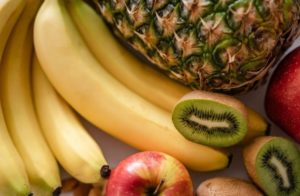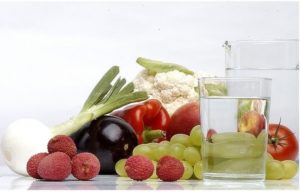
By Dr. John R. Mishock, PT, DPT, DC
Why is nutrition essential to me as an athlete?
Good nutrition is essential to improve or maintain health parameters (blood glucose, cholesterol, blood pressure), maintain optimal weight, prevent disease (infection, heart disease, hypertension, cancer), and improve healing from injury. A diet that is primarily whole food and plant-based are ideal for optimal health and disease prevention. Ample fruits and vegetables, nuts and seeds, lean meats (moderation), and avoiding ultra-processed foods (saturated fats, trans-fats, pastries, crackers, cookies, chips, soft drinks, fried foods) play an essential role in providing improved muscle repair and growth following injury or exercise training.
The energy needs of athletes exceed those of the average person. It’s not uncommon for male and female athletes, especially those still growing, to have caloric needs exceeding 2,400-3,000 kcal per day. Food is your body’s fuel for performance. “A proper diet can’t make an average athlete elite, but a poor diet can make an elite athlete average.”
What are macronutrients?
Macronutrients are carbohydrates, protein, fat and fiber. These elements are essential for our body’s growth and maintenance.
Why is understanding my refueling and repair system important for my training and sports performance?
Your sports performance hinges on the physiology and function of the bodies refueling and repair system to create energy. The body uses aerobic (with oxygen) and anaerobic metabolism (without oxygen) to create energy. The fuel or energy the body uses is called adenosine triphosphate (ATP). The production of ATP occurs in the cell’s mitochondria (power house of the cell). The energy system below supplies the basic overview of why we must eat a certain way to refuel and repair our body following training or competition.
- Aerobic metabolism: This is the body’s default energy system that functions for long periods of simple daily movement. The aerobic system uses oxygen, carbohydrate, or fat to make ATP. With training, the efficiency of the system can improve by 20-50%.2.
- Anaerobic metabolism: has two central systems, glycolysis and phosphocreatine system.
a. Glycolysis:
1. Only uses carbohydrates from the muscle or liver stored as glycogen for energy
2. More susceptible to fatigue (lactic acid build-up).
3. Excessive lactic acid build-up following training produces muscle soreness (delayed onset muscle soreness or DOMS)
4. Training can improve the efficiency of this system by approximately 20%.
Carbohydrates eaten at certain times refuels the system enhancing training and sports performance.
b. Phosphocreatine system
1. Regenerated in the muscle by using creatine to make ATP.
2. The body needs 90 sec of rest to allow the recovery of this system.
3. Used over and over.
4. Does not change with training.
5. This is why the supplement “creatine” (creatine monophosphate) works to give the athlete energy for muscle function and development.
Practical takeaway: The two energy systems work together based on the intensity of the exercise and the energy needs. The aerobic metabolism is being utilized for most low-level activities.
As we begin to move with more vigor, the anaerobic metabolic system (glycolysis and phosphocreatine system) is switched on. For example, in basketball, the athlete is using aerobic metabolism with low-level movements.
There is a switch over to anaerobic metabolism with explosive movements such as sprinting or jumping. Eating the right type of carbohydrate before, during, and after training and competition is needed to meet the body’s energy needs.
Based on these metabolic energy pathways how much can my endurance be enhanced with training?
Sport-specific exercise training enhances the aerobic system by 20-50%, and the anaerobic system (glycolysis) by 20%. With training there can be a net gain of 40-70% improvement. (Holway et al. J Sports Sci, 2011) “Be the best conditioned athlete on the court or field.”
When should I eat carbohydrates to optimize exercise or sports performance?
1. 4 hours before: Consume 1.2 g per lb of body weight of carbohydrate. For example, 210 g or 7 oz for a 175 lb athlete. 210 g would be approximately one large banana, one plain bagel, one container of yogurt.
2. 2 hours before: a light snack (2 slices of toast, piece of fruit, a nutrient bar)
3. During: Consume 30-60 g per hour when playing > 60 minutes or more, equivalent to a small snack (orange) or sports drink. Eat or drink this between quarters or at halftime.
4. 1 hour after: Consume 1.2 g per lb. per body weight of carbohydrate.
5. Extended: Less than 8 hours to recover, .5 g per lb. of body weight of carbohydrate should be consumed every 4 hours.
Why should I eat fruits and vegetables?
Fruits and vegetables are filled with energy and nutrients necessary for optimal health, exercise training, sports performance, and recovery. They also are rich in vitamins, minerals, antioxidants, phytochemicals, and other substances that are essential for repair of neuromuscular damage and preventing disease such as; heart disease, diabetes, high blood pressure, cancer, and much more.
 Fruits and vegetables enhance the immune system, which is made up of cells, tissues, and organs that work together to protect the body from infection and disease and promote cellular repair following exercise and competition. Keep in mind a certain amount of inflammation following training is typical and needed to enhance remodeling and return to homeostasis of the body. (Peake et al. J of Appl Physiology, 2017)
Fruits and vegetables enhance the immune system, which is made up of cells, tissues, and organs that work together to protect the body from infection and disease and promote cellular repair following exercise and competition. Keep in mind a certain amount of inflammation following training is typical and needed to enhance remodeling and return to homeostasis of the body. (Peake et al. J of Appl Physiology, 2017)
Eating a wide variety of colorful fruits and vegetables, at least five servings per day will help to balance the recovery process. One serving size is the approximate size of a baseball or the palm of your hand.
Vegetables to choose from are; spinach, broccoli, carrots, tomatoes, cauliflower, asparagus, peppers, green beans, mushrooms, cabbage, eggplant, onions.
Healthiest fruits; Apples, oranges, grapefruits, blueberries, strawberries, cranberries, lemons, pineapple, mangos, pomegranate.
Dr. Mishock is one of only a few clinicians with doctorate level degrees in both physical therapy and chiropractic in the state of Pennsylvania.
He has also authored two books; “Fundamental Training Principles: Essential Knowledge for Building the Elite Athlete“, “The Rubber Arm; Using Science to Increase Pitch Control, Improve Velocity, and Prevent Elbow and Shoulder Injury”. Both can be bought on Amazon.
If pain or limited function is keeping you from doing the activities you enjoy,
WE CAN HELP
Reduce pain and increase function
Call for a FREE Phone Consultation or to schedule your visit (610)327-2600.
Locations: Gilbertsville, Skippack, Phoenixville, Steiner Medical, Boyertown, Pottstown, and Limerick (inside the Spring Valley YMCA).
Appointments available 7:00am to 8:00pm, ALL locations, most days!
Saturday Appointments available
Visit our website to REQUEST AN APPOINTMENT, read informative articles, meet our physical therapy staff, and learn about our treatment philosophy.
